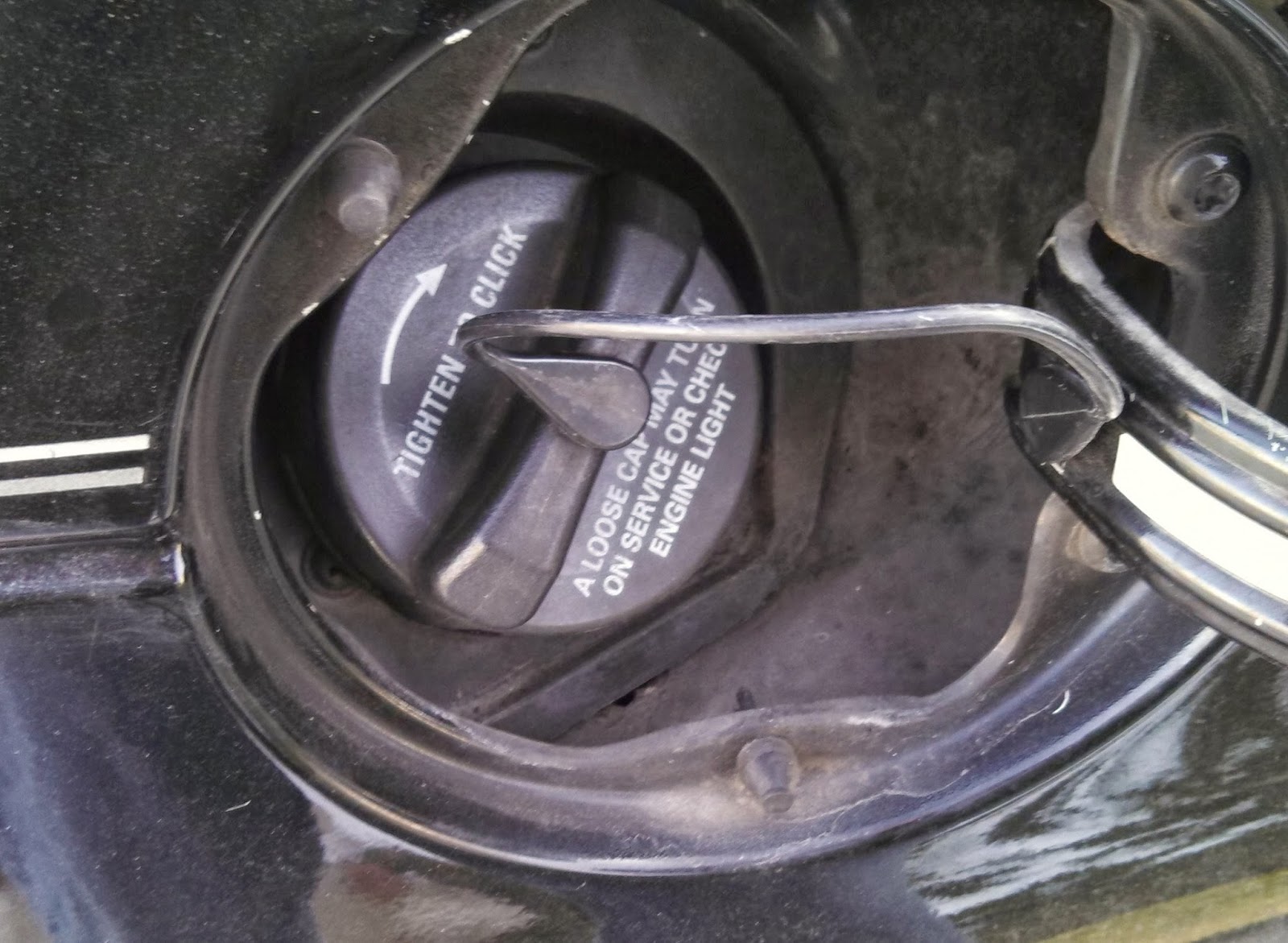Ever walked past your car and smelled gasoline? Or perhaps seen that dreaded "check engine" light illuminate your dashboard? A loose or improperly secured gas cap is often the culprit. This seemingly minor detail plays a significant role in your vehicle's performance, fuel efficiency, and environmental impact. Mastering the art of gas cap tightening is a simple yet vital skill every car owner should possess.
Securing your gas cap correctly may seem straightforward, but there's more to it than meets the eye. It's not just about twisting it on; it's about ensuring a proper seal that prevents fuel vapors from escaping. These vapors contribute to air pollution and can negatively impact your car's fuel economy. Understanding the nuances of this simple task can save you money, reduce your environmental footprint, and prevent potential car troubles.
The importance of a tightly secured gas cap has grown alongside advancements in vehicle technology. Modern vehicles are equipped with sophisticated evaporative emission control (EVAP) systems designed to capture fuel vapors and prevent them from entering the atmosphere. A loose or improperly sealed gas cap can disrupt this system, triggering the check engine light and potentially leading to more serious issues.
Historically, gas caps were simpler, often just a threaded cap without the complex sealing mechanisms found in modern vehicles. However, as environmental regulations became stricter, gas cap designs evolved to prevent fuel evaporation and minimize emissions. Today, they are precision-engineered components designed to work seamlessly with the EVAP system, highlighting the importance of proper tightening techniques.
One of the primary issues related to gas cap tightening is simply not tightening it enough. This can be due to rushing, distraction, or simply not realizing the importance of a secure seal. Another common problem is cross-threading the cap, which can damage the threads and prevent a proper seal. Understanding how to avoid these issues is essential for maintaining your vehicle's performance and preventing costly repairs.
Ensuring a properly secured gas cap offers several benefits. First, it prevents fuel leaks and minimizes evaporative emissions, contributing to cleaner air and a healthier environment. Second, it helps maintain optimal fuel efficiency by preventing fuel loss through evaporation. This translates to fewer trips to the gas station and more money in your pocket. Finally, a properly tightened gas cap prevents the check engine light from illuminating due to EVAP system issues, saving you the time and expense of diagnostic tests and potential repairs.
Tightening your gas cap correctly is a simple process: turn the cap clockwise until you hear a clicking sound. This usually indicates that the cap is securely sealed. Avoid over-tightening, which can damage the cap or the fuel filler neck. If you're unsure, consult your vehicle's owner's manual for specific instructions.
Advantages and Disadvantages of Properly Tightening a Gas Cap
| Advantages | Disadvantages |
|---|---|
| Prevents fuel leaks | Potential for cross-threading if not careful |
| Reduces emissions | Can be slightly inconvenient if rushed |
| Improves fuel economy |
Best Practices: 1. Always tighten until you hear the click. 2. Don't force the cap. 3. Check the cap regularly for damage. 4. Replace a damaged cap immediately. 5. Consult your owner's manual for specific instructions.
FAQs:
1. Why is my check engine light on after tightening my gas cap? - It may take a few driving cycles for the light to reset.
2. How can I tell if my gas cap is damaged? - Look for cracks, missing pieces, or difficulty tightening.
3. Can I drive with a loose gas cap? - It's not recommended as it can lead to fuel loss and emissions.
4. How often should I replace my gas cap? - Typically, every few years or if it's damaged.
5. What should I do if I cross-thread my gas cap? - Take it to a mechanic to assess the damage.
6. Can I use any gas cap on my car? - No, use the correct cap for your vehicle's make and model.
7. How can I improve my gas cap tightening technique? - Practice and consult your owner's manual.
8. Where can I buy a replacement gas cap? - Auto parts stores or online retailers.
In conclusion, the seemingly simple act of tightening your gas cap is a crucial aspect of vehicle maintenance. It's a small effort with significant rewards, contributing to a cleaner environment, improved fuel efficiency, and a smoother-running vehicle. By understanding the importance of proper gas cap tightening and following the best practices outlined in this guide, you can avoid potential problems, save money, and contribute to a healthier planet. Make it a habit to check and secure your gas cap every time you fill up – it’s a small action with a big impact. Take control of your vehicle's health and performance by mastering this essential skill today. Don't underestimate the power of a properly tightened gas cap – it's a simple step towards a more efficient and environmentally friendly driving experience.
Saturn Vue Gas Cap Check Engine Light at Joel Marrero blog - The Brass Coq
Why Does My Acura Say Tighten Fuel Cap at Wayne Jaquez blog - The Brass Coq
Tighten Gas Cap Check Engine Light - The Brass Coq
How To Tighten A Loose Gas Cap at Erwin Wedgeworth blog - The Brass Coq
Replacetighten your gas cap - The Brass Coq
Gas Cap Seal Check Engine Light - The Brass Coq
Gas Cap 2005 Chevy Silverado - The Brass Coq
Getting To Know Your 2012 Buick Enclave - The Brass Coq
Tighten Gas Cap message - The Brass Coq
What Does the Security Indicator Light Mean - The Brass Coq
Reset Check Engine Light 2000 Ford Ranger - The Brass Coq
how to tighten gas cap - The Brass Coq
Check fuel cap light on honda - The Brass Coq
Top 52 imagen gas cap warning jeep wrangler - The Brass Coq
Honda Civic Tighten Fuel Cap Warning at Carlos Attwood blog - The Brass Coq













